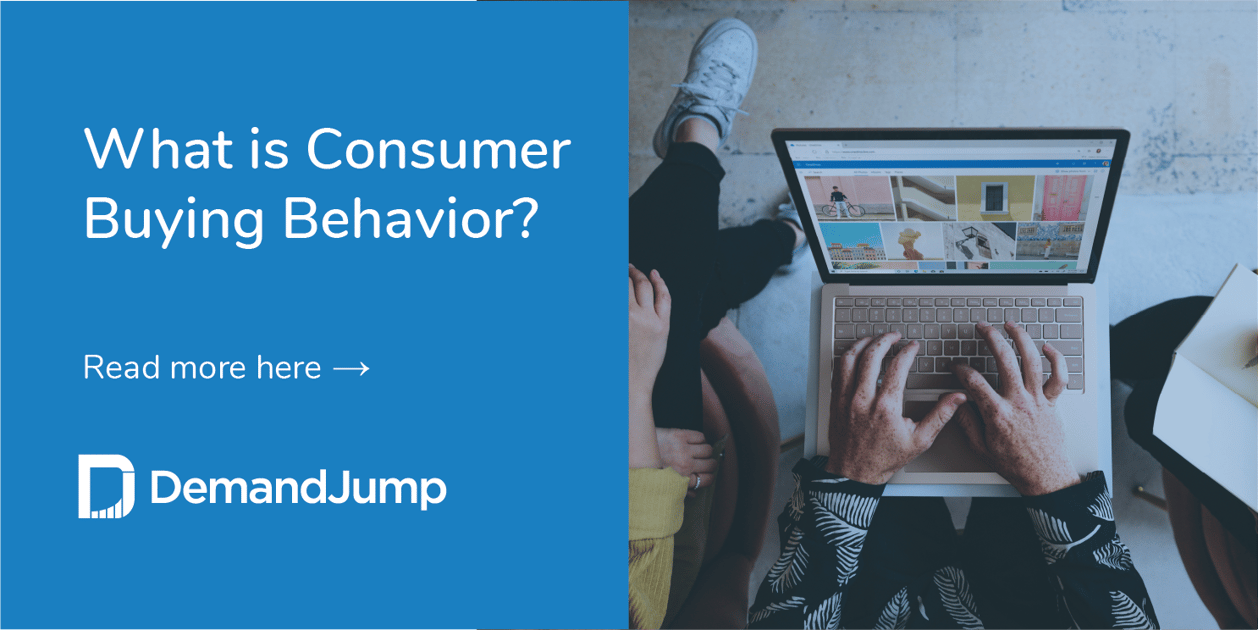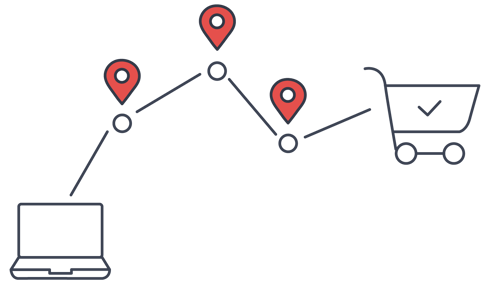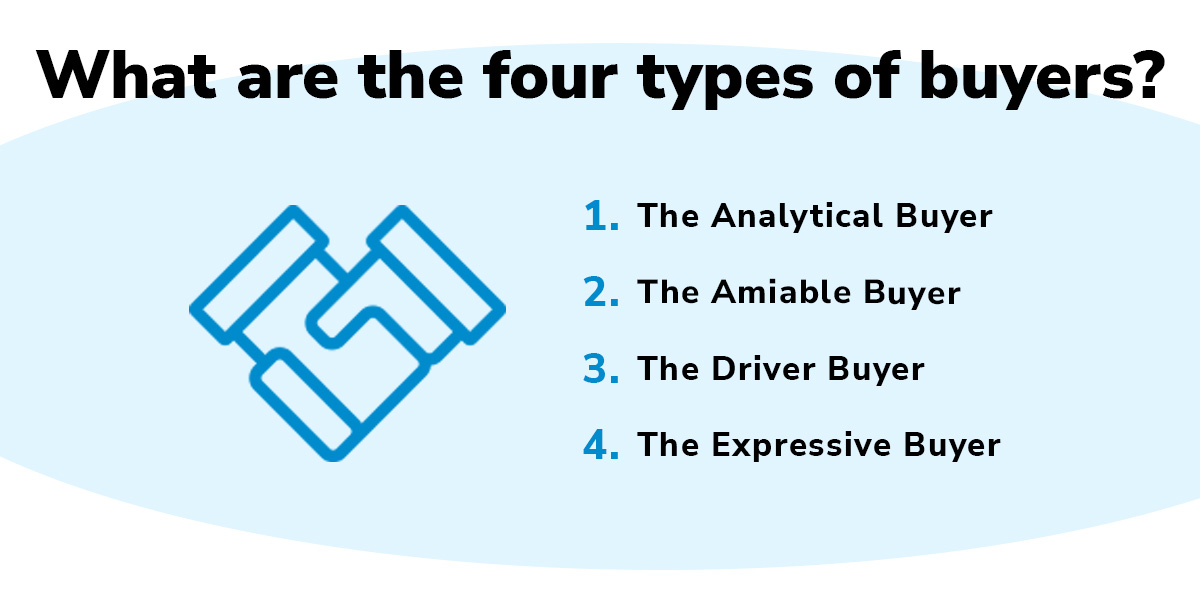What Is Consumer Buying Behavior?
January 24, 2020 •DJ Team

Definition of Consumer Buying Behavior:
We have all experienced the moment when we walk into a store and see something that we just have to have. Retailers spend billions of dollars every year trying to generate that feeling in their customers. Web campaigns, video and print ads, social media campaigns, and branding seem to converge as the consumer finally feels a connection to a product and makes a purchase. So what drives that behavior? And how do you capture and then replicate that lightning-in-a-bottle moment when a potential customer turns into a buyer? This blog will dive into what consumer buying behavior is, what influences it, and what the different types of buyers are.
Consumer Buying Behavior refers to the actions taken (both on and offline) by consumers before buying a product or service. This process may include consulting search engines, engaging with social media posts, or a variety of other actions. It is valuable for businesses to understand this process because it helps them better tailor their marketing initiatives to the marketing efforts that have successfully influenced consumers to buy in the past.
There are several factors that affect this type of behavior.
Click here to get a free, custom report for your business about consumer buying behavior.

What are the major factors that influence consumer buyer behavior?
A variety of factors go into the consumer buyer behavior process, including cultural, social, personal, and psychological factors. Taken separately, they may not result in a purchase. When put together in any number of combinations, the likelihood increases that someone will connect with a brand and make a purchase. Let’s take a closer look at each of these factors.
- Cultural Factors - Culture is not always defined by a person's nationality. It can also be defined by their associations, their religious beliefs or even their location.
- Social Factors - Elements in a person's environment that impact the way they see products.
- Personal Factors - These may include someone's age, marital status, budget, personal beliefs, values, and morals.
- Psychological Factors - A person's state of mind when they are approached with a product will often determine how they feel not only about the item itself but the brand as a whole.
What are the four types of buyers?
There are four different types of buyers: the analytical, the amiable, the driver, and the expressive buyer. They differ based on what motivates them to make a purchase.
1. The Analytical Buyer - Motivated by logic and information, this buyer will look at all the data on competing brands and products before making an informed decision.
2. The Amiable Buyer - Warm and friendly, this buyer just wants everyone to be happy. That is why they are often paralyzed by big decisions when there is the perception of a win/lose outcome.
3. The Driver Buyer - Drivers are most concerned with how others view them and whether they follow. The trendsetters, Drivers are most concerned with their appearance rather than the relationships that are formed during a transaction.
4. The Expressive Buyer - Relationships are key to the Expressive Buyer. They cannot stand feeling isolated or ignored during a transaction. Instead, they want to feel like your most important asset.
It's hard to distill something as complex as consumer buying behavior into four neat and tidy categories. Most people will find they are a combination of these types of consumer buying behavior. To better understand this behavior, it’s important to understand the stages involved in the consumer buying process.
What Are the Five Stages of the Consumer Buying Process?
There are five stages of the consumer buying process: finding a problem, gathering information, finding solutions, making a purchase, and reviewing the purchase.
- Find a Problem - In this stage, the consumer first notices when they have a problem they want to solve. This could be anything from wanting an outfit for an upcoming event to needing a leaky pipe in their house fixed.
- Gather Information - Next, consumers will want to figure out what might be causing their problem and how to fix their problem. They might turn to the internet for recommendations or more information about what might be causing their problem. For our examples, the person shopping for a new outfit might search for the best fabrics to wear to an outdoor wedding. The person with a leaky pipe might look into what causes a leaky pipe to see if they can fix the problem on their own.
- Find Solutions - Once the consumer has finished gathering information, they will look for more specifics on how to fix their problem. They will start comparing brands and looking at reviews from others to help them decide on a solution. The person shopping might look for places with the nicest formal wear at the lowest prices. The person with the leaky pipe might look at reviews for the best plumbers in their area.
- Make a Purchase - This is where the consumer will make a decision and spend money on a solution. For our examples, that would mean buying a new outfit and hiring a plumber.
- Review the Purchase - Some consumers may leave a review on your website, some don’t. In either case, the consumer will personally review the product or service they received and determine whether they would recommend it to others or purchase from their chosen business again.
How can you tell what consumers want and whether your business can solve their problems? DemandJump can help you figure out your consumers’ behavior.
Use DemandJump to Track Consumer Buyer Behavior
Interested in learning more about your target audience's online consumer buying behavior? DemandJump’s insights reports can help. Not only do we gather data about the way your customers are behaving, but we also send you automated recommendations about how to improve your marketing campaigns and give you ideas for content to really entice your customers.
To see how you stack up against competitors and understand how your customers are searching the web, get started with a free account today!
Featured Articles
Categories
- Attribution Tracking (13)
- Channel Optimization (11)
- Consumer Insights (68)
- Content Marketing (251)
- Data Science (8)
- Digital Marketing (6)
- Digital Transformation (26)
- Enterprise (10)
- Lead Generation (14)
- Market Intelligence (8)
- Marketing Analytics (39)
- Marketing Attribution (57)
- Marketing Management (153)
- Marketing Operations (86)
- Organic Search (222)
- Paid Search (52)
- Pillar-Based Marketing (63)
- Programmatic Advertising (9)
- SaaS Content (14)
- SaaS Marketing (29)
- Search Marketing (111)
- SEO Keyword Research (28)
- SEO Pillar (18)
- SEO Strategy (46)
- SMB (5)
- Website Content (12)


